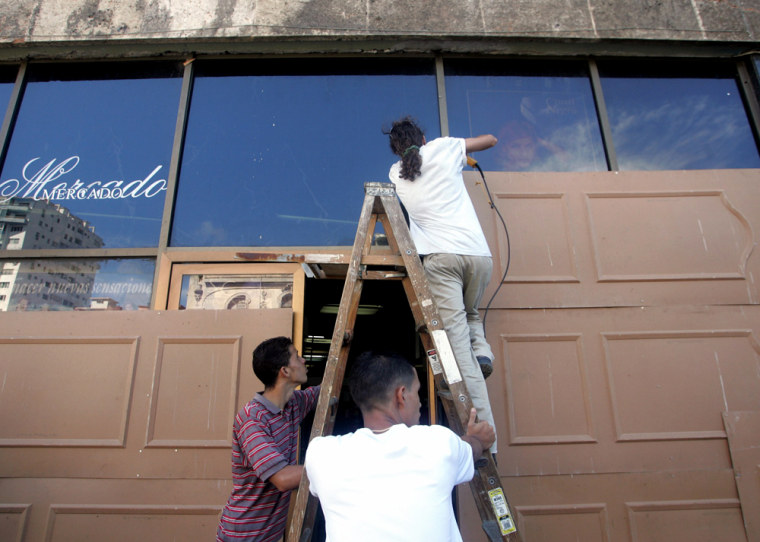Hurricane Rita turned day into night, blackening the skies over Havana on Tuesday as the Category 2 storm scraped across Cuba’s northern coast before moving farther into the warm waters of the southeastern Gulf of Mexico.
The hurricane’s outer bands brought heavy rain and wind but only for a few short hours. Early reports indicated that Rita dumped just about five inches of rain over the city of Havana.
The Cuban Meteorological Institute said that Rita’s eye passed 54 miles north of the capital at 4 p.m. EDT, sparing the island the brunt of its force. Preliminary reports indicate that the storm triggered minor coastal flooding and caused some damage to Cuba’s aging power grid.
Parts of downtown Havana experienced flash flooding when blocked drains and city sewers could not handle the quick downpour.
By early afternoon, the lights went out along the northern seaboard and in five major Havana neighborhoods.
In Havana alone, about a quarter of a million people had lost power.
‘Slight’ damage to grid
However, a spokesman for Cuba’s national electric company described the overall damage as “slight” and promised to have crews working to restore power as soon as weather conditions improved.
A solid 24 hours before the storm hit, Cuban Civil Defense began evacuating people living in flood areas and in houses too weak to withstand hurricane conditions.
By Wednesday afternoon, the Cuban Civil Defemse had evacuated a total of 230,000 people, with 18,000 opting to stay in government shelters.
Stores and government offices closed by morning, some boarded up with hard-to-find plywood. Although grade schools were officially kept open, few students were at their desks.
Taking no chances
So far, there have been no reports in Cuba of death or injuries associated with Hurricane Rita.
Still, the island’s Civil Defense was taking no chances, executing emergency evacuation plans in case Rita changed direction.
Authorities issued a hurricane warning for the island’s central and western provinces and mandatory evacuation for some people living in low-lying coastal regions and isolated mountain communities. Also, about 3,000 head of cattle were moved to higher ground.

Residents were encouraged to stay tuned to local television and radio broadcasts for the latest on weather and civil defense plans.
Dr. Jose Rubiera, who leads Cuba’s forecast center, predicted earlier that Rita would just skim the island’s northern coast, dumping between 4 and 5 inches of rain, and he appears to have been proved right.
‘We won’t let down our guard’
With Rita’s southern rain bands being much weaker than those on her northern flank, Rubiera expected nothing close to the strong winds and sea surge normally associated with a direct hit.
Hurricanes, though, are tricky to predict and the gulf’s present warm temperatures added an extra element of unpredictability.
“This is not a danger for Cuba but we won’t let down our guard. We’re watching Rita in case the storm shifts south,” Rubiera said earlier.
Hurricane Dennis — a Category 4 that battered the island’s southeastern ridge on July 9 — caused $1.2 billion in structural damage and left 16 people dead. The majority of those killed were people who did not heed Civil Defense mandatory evacuation orders.
